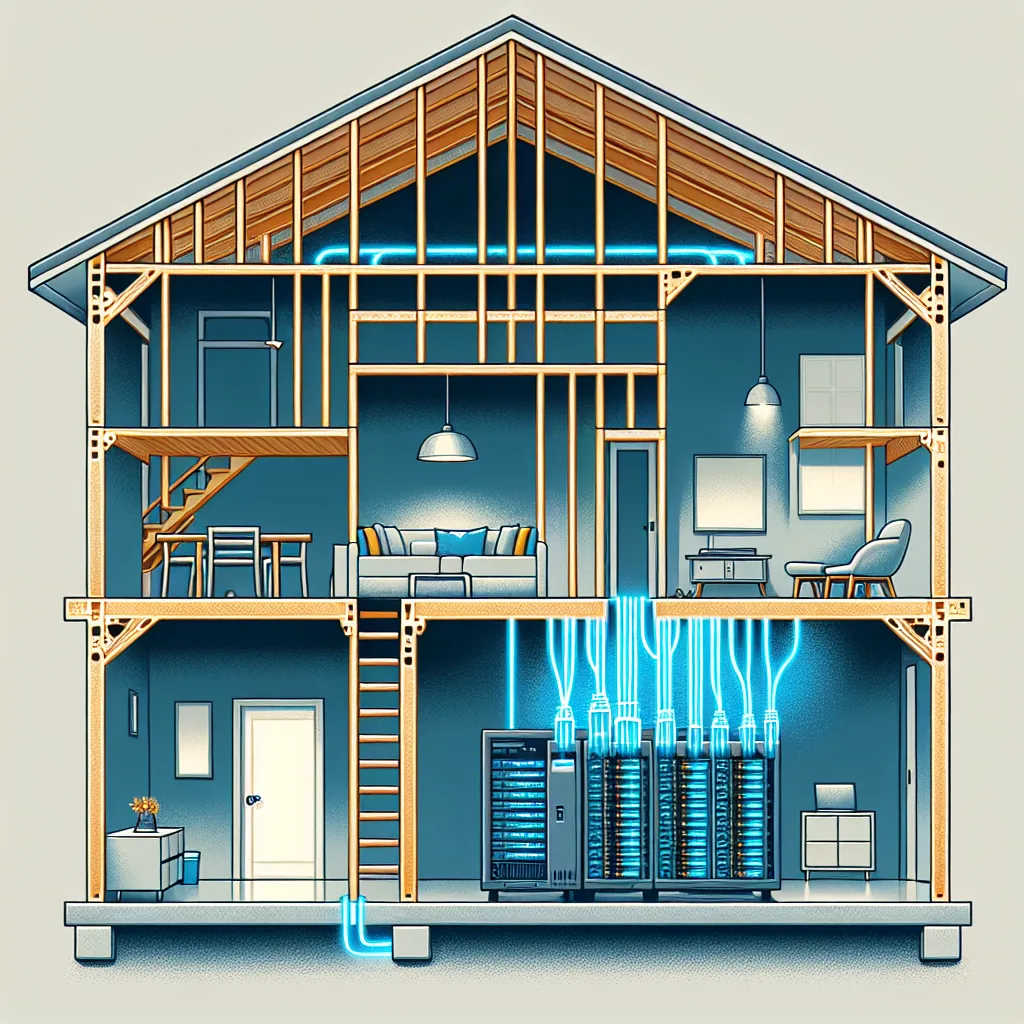Planning a home renovation? Don’t just think about paint colors. Learn why running ethernet and planning a central spot for your tech now is the best move.
It started, as these things often do, with a simple idea. I’m in the middle of a massive home renovation—we’re talking walls-are-open, dust-everywhere kind of messy. And in a moment of organizational pride, I set up a neat little pegboard for my router. It looked good. Clean.
Then the thought crept in: “You know, while the walls are open, I could run a few cables.”
That’s when the snowball started rolling downhill.
I had an old Optiplex computer lying around. Why not tuck it in there for some basic smart home stuff? A good idea, right? Then I remembered how much I disliked ads. “I should set up my own network-wide ad blocker,” I thought. While I’m at it, a personal media server for movies sounds pretty great, too.
Suddenly, my little pegboard was a full-blown wall cabinet, and it was getting crowded. The house is still a construction zone, but the fiber internet is blazing, ten security cameras are wired up, the smart smoke alarms are online, and Wi-Fi access points are in the ceiling.
Now I’m staring at a pile of networking gear I impulse-bought, wondering where a full server rack is supposed to go.
If you’re nodding along, or if you’re at the start of your own renovation, let me share what I’ve learned. If your walls are open, you have a golden ticket. Don’t waste it.
Run More Cable Than You Could Ever Imagine
This is the biggest one. Seriously. Ethernet cable is cheap. Opening up drywall, patching it, and repainting it is not.
Right now, you might only need one connection behind your TV. But in five years, you might have a new streaming box, a gaming console, and a soundbar that could all benefit from a stable, wired connection.
My rule of thumb now is this: Run at least two Ethernet drops to every single spot you think you might need one.
- Bedrooms? Two drops in at least two different walls.
- Living Room? Four drops behind the TV, and two more elsewhere.
- Office? At least four. You’ll use them.
- Kitchen? Yes, even the kitchen. Smart displays and appliances are getting more common.
- Weird spots? Run one to the garage, the attic, and maybe even the porch.
The best-case scenario is you don’t use them all. The worst-case scenario is kicking yourself in a year because you have to tear open a brand-new wall to run a $1 cable. If you can, run the cables inside conduit. That way, if a new standard like Cat 8 becomes common, you can just pull new wires through without opening the walls.
Give Your Tech a Home
All those cables need to go somewhere. Don’t just have them all dangling in a messy bundle in your basement. Plan for a central “nerve center.” It doesn’t have to be a full server rack like the ones you see in data centers. It can be a simple wall-mounted cabinet in a utility room, a closet, or the basement.
Think about a few things when picking the spot:
- Ventilation: This gear can get warm. A closet with no airflow is a bad idea. Make sure there’s a way for hot air to get out.
- Power: You’ll need a dedicated electrical circuit. Don’t put it on the same circuit as your freezer or a space heater.
- Noise: While most basic home networking gear is quiet, if you start adding servers, they come with fans. Tucking it away in a basement is better than putting it in the coat closet by the front door.
So, What Do You Actually Need to Wire For?
It’s easy to get carried away. But while the walls are open, here are the things you should absolutely plan for.
- Wi-Fi Access Points (APs): A single router sitting in your office is not going to give you great Wi-Fi across the whole house. The best way to get flawless coverage is with multiple Access Points. These are small devices that broadcast your Wi-Fi signal. They work best when they’re mounted on the ceiling, and they need an Ethernet cable for connection and power (this is called Power over Ethernet, or PoE). Pick a few central spots in your hallways on each floor and run a cable there.
- Security Cameras: Wired security cameras are more reliable than their wireless-only cousins. They also use PoE, so you only need to run one cable for both data and electricity. Walk around your property and decide where you want cameras. Now is the time to run the wires.
- The Obvious Stuff: Your main computer, your TV, your media streamer (Apple TV, Roku), and your gaming consoles will always perform better on a wire.
It’s a slippery slope, this whole homelab thing. It starts with a simple desire for better organization and quickly spirals into something much bigger. But the planning part? That’s the foundation. Get the wiring right while the walls are open, and you can build out the fun stuff slowly over time.
You don’t need to buy the server rack today. But it’s a really good idea to run the cables for it now. Trust me.
